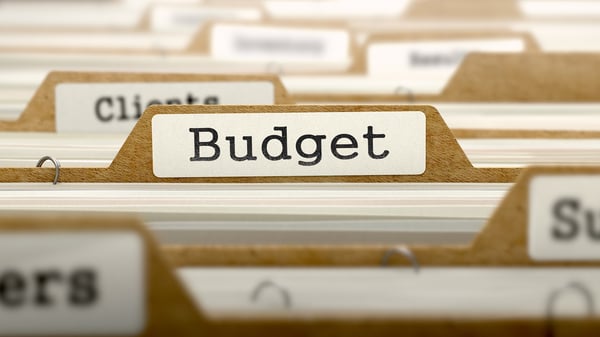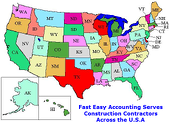Cutting costs can be a quick and easy way to improve the profitability of your construction business. Introducing cost-control measures can bring immediate savings and ensure you remain profitable in the long term.
But cost-control measures must be carefully managed. Eliminating errant expenses is beneficial, but indiscriminate cost-cutting could lead to a drop in quality or poor morale if staff fear being made redundant or are not given the tools they need to do their job efficiently.
This risk is heavily reduced by identifying where you can safely trim costs, setting clear cost-reduction targets, and researching any cost-saving initiatives before making changes to your contracting business.

Planning for effective cost-control
The first step towards reducing costs is identifying your major cost areas. These are likely to include:
- Production
- Purchasing
- Sales and marketing
- Financing
- Administration
- Facilities maintenance
1. Profit and Loss
Start by assessing your profit and loss statement for the last six months and rank all your expenses from highest to lowest, working your way down the list and identifying areas where you can reduce costs. It's a good idea to first focus on identifying cost-saving measures in places where you'll see the most significant return. For example, it's wise to work toward saving 5% on a $200,000 expense rather than a slightly higher percentage on a lower-cost expense.
2. Try new ideas
You might find it challenging to anticipate savings without implementing new systems and processes. Remember that any changes you make don't need to be permanent. If you aren't sure if a cost-saving measure is suitable for your business, consider trying it for a few months and then assessing the results. This way, you'll know the actual cost savings without committing long-term to new processes or changes.
Any new processes or systems should be benchmarked and frequently revisited to ensure they are still suitable for your business. Consider asking staff for feedback around any changes to confirm that no hidden problems could cost you more than the cost-saving value.
If you are in doubt about any potential changes, consider seeking professional advice from an accountant, industry association, or business mentor.
3. Quick savings
You might be surprised that significant savings can be made without worrying about your quality and affecting performance. Here are the most popular ways to trim costs without making radical changes.
- Eliminate unnecessary costs – start with waste reduction, heating costs, and utility charges.
- Reduce inefficiency by identifying manual tasks that could be computerized or completed less frequently.
- Avoid frequent, small orders that cost more than larger orders and take additional time to complete.
- Reduce travel expenses by booking air travel earlier and using cheaper accommodations on business trips.
- Find alternatives to high-priced suppliers or negotiate better payment terms or discounts on purchased goods.
- Revise your credit policies to encourage prompt payment.
- Brainstorm immediate cost savings with your staff – they might have some valuable suggestions you may have overlooked.
4. Significant savings
Once you have identified your major cost areas, you may want to investigate potential ways to save money by changing existing processes.
Some of the most common opportunities are listed below, but before adopting any changes, you should be aware of any potential damage to your core business activities.
- Cut payroll costs by outsourcing non-essential activities.
- Redesign your existing processes to eliminate duplication and cut time wastage.
- Make use of current technology or the latest industry innovation.
- Agree to long-term supply contracts, or guarantee a minimum purchase amount to secure better terms.
- Trim back or revise your current product offering and remove poor-performing products.
- Form strategic alliances with other businesses to buy larger volumes.
- Consider subletting office space or relocating to a more cost-efficient location.
There may also be other costs, such as long-term, fixed-rate business loans or fixed-price contracts for raw materials, that you may be able to reduce when these are up for renewal or tender.
Pitfalls to avoid
Reducing costs can have a negative effect, so you'll need to be sure that changes will not compromise your operational performance.
Some common pitfalls include:
- Over-dependence on one supplier could put you at risk if your supplier fails.
- Reducing your marketing budget could affect your marketing strategy.
- Tighter control of business finances could leave you without a safety margin if cash flow becomes tight.
- Cutting short-term costs such as training, research, development, or advertising can lead to long-term weaknesses.
Employee costs
Reducing employee-related costs is generally risky and counterproductive in the long term. Reducing costs such as staff training or meeting times could lead to poor staff morale and reduced productivity.
Making employees redundant could bring short-term costs and the risk of possible employment proceedings. It may also contribute to low morale. Changing an employee's terms and conditions can also create legal issues in some circumstances, so it's always a good idea to get expert advice before making a decision.
These problems can be minimized by maintaining clear communication with employees. Introducing cost-saving through improved practices and procedures will require a degree of employee 'buy-in' so your employees know why you are making changes. Employees may need additional training and support over these periods.
Next steps
- Schedule a staff meeting to review your costs and brainstorm possible saving measures.
- Commit to an ongoing cost-control and monitoring process (or delegate to key staff to manage the process).
- Ask your accountant to assist you with cost-saving initiatives or brainstorm ideas.
Final thoughts
Every small construction business owner knows how challenging it is to cut down expenses without somehow compromising internal or external quality. Regardless of your business's nature, the first step to reducing your overhead costs is to take the time to go through every single expense you have -assess which ones are necessary for your business to operate smoothly, what can be trimmed down, and what can be eliminated.
It's important not to rest on your laurels. Continually thinking of ways to reduce your overheads is essential for a healthy cash flow, so conducting regular reviews of your business expenses should be a routine task.
About The Author:
![]() Sharie DeHart, QPA, is the co-founder of Business Consulting And Accounting in Lynnwood, Washington. She is the leading expert in managing outsourced construction bookkeeping and accounting services companies and cash management accounting for small construction companies across the USA. She encourages Contractors and Construction Company Owners to stay current on their tax obligations and offers insights on managing the remaining cash flow to operate and grow their construction company sales and profits so they can put more money in the bank. Call 1-800-361-1770 or sharie@fasteasyaccounting.com
Sharie DeHart, QPA, is the co-founder of Business Consulting And Accounting in Lynnwood, Washington. She is the leading expert in managing outsourced construction bookkeeping and accounting services companies and cash management accounting for small construction companies across the USA. She encourages Contractors and Construction Company Owners to stay current on their tax obligations and offers insights on managing the remaining cash flow to operate and grow their construction company sales and profits so they can put more money in the bank. Call 1-800-361-1770 or sharie@fasteasyaccounting.com
OUTSOURCED ACCOUNTING FOR
THE BUSY CONTRACTOR
IN A MOBILE ENVIRONMENT

|

|

|

|
Download the Contractors APP today from the App Store or Android Store
Access Code: FEAHEROS
Click here to download the App on Android:
Click here to download the App on iOS:
Simply scan the QR code or search for ‘MyAccountants’ in the App Store and enter the Access code: FEAHEROS to utilize the powerful App features and capabilities and benefit from having our Construction Accounting App at your fingertips, 24/7."
PS: Even if you are not a Construction Contractor, you will find plenty of benefits in the app, so we invite you to download it too! It's Free so why not?





























